The first day of Spring this year will be March 20, 2013.
The four seasons are generally defined as: spring, summer, autumn (also known as fall) and winter. Each season lasts three months. The three warmest months are summer and the three coldest months are winter with the months between each of those seasons having the greatest varying of transitional temperatures.
At the time of the vernal equinox, the axis of the Earth is increasing a tilt toward the Sun and the length of daylight increases. In our case, the Northern hemisphere begins to experience warmer temperatures. If snow/frost are a normal part of your winter, the temperatures start to warm, the snow begins to melt and the rivers and streams begin to flow with increasing amounts of water. The flower bulbs start to break through the soil sometimes with snow still on the ground. The crocus is a perennial that traditionally starts to bloom in late winter or early spring which is a good indication that warmer weather is coming soon. Plants and trees also start to bloom, such as: magnolias and cherry trees. Forsythia branches can be brought indoors and with the interior warmth of our home the flowers will magically bloom and it is a perfect way of bringing a little bit of spring indoors. With the temperatures starting to warm, many of us start to pull out those garden catalogs that have been arriving all winter and start to plan our spring/summer gardens.
Before spring, try getting an early start to your garden planting. Find a good spot will a sunny window, perhaps the kitchen counter, laundry room or even down in the basement with artificial lights. Sow the seeds in potting soil in several peat pots on a tray to catch the draining water. Under these indoor growing conditions, smaller plants seem work much better, such as a variety of herbs. As we get closer to outdoor planting time and the danger of frost is gone, we can start to sow the seeds for our garden vegetables. (This is a great family project with small children because they can learn about the plant growth process and experience the excitement to see the plants begin to sprout!!)
Spring legends
Folklore has it that the vernal equinox is the only day of the year when an egg can be stood on its end, this is not true. In fact, eggs are nature’s perfect symbol for life, new beginnings and the joys of springtime.
The phoenix earned its legendary immortality by refusing to eat from the forbidden tree in the Garden of Eden. Every 500 years, the bird creates a nest of herbs and spices, sits upon it and then sets itself on fire. After the fire dies down, an egg laid by the phoenix is found among the ashes. The egg hatches, and the phoenix emerges, resurrected.
Spring Cleaning
After the long winter months, we begin to emerge from our hibernation indoors. Spring brings us renewed energy and usually that energy is turned into spring cleaning. Below are a list rooms and some basic cleaning tips.
Kitchen –
- Clear the contents from both the refrigerator and freezer. Discard any expired or spoiled items. Thoroughly clean the interior of both the refrigerator and freezer.
- Don’t forget to clean the refrigerator coils, this helps with energy efficiency and will save money, too!
- Prepare the oven and stove by removing the burner/covers and knobs. Thoroughly clean the interiors. If possible, pull the oven and stove from the wall, sweep and mop the area behind.
- Clean the small appliances, such as: microwave, coffeemaker, toaster, blender, etc.
- Clear the contents from the kitchen cabinets. Discard any expired food products or broken/chips plates, dishes and glassware. Clean the cabinets, both interior and exterior. Replace shelf liners if necessary.
- Thoroughly clean the kitchen sink, be sure the faucet and drains are running properly. It is a good time to schedule any plumbing repairs.
- Clean the windows, both interior and exterior, with a streak-free cleaning solution.
- Finally, sweep and mop the floor. Consider floor wax for the wooden floors.
Bathroom –
- Remove items from the medicine cabinet. Discard any expired prescriptions or medicines. Clean both the interior and exterior. Take an inventory of supplies and replenish needed items.
- Clear the contents of the bathroom cabinets. Now is a great time to replace worn towels and purchase new ones. (Consider donating the old towels to the local animal shelter) Think about adding new bath soaps/oils and new candles to create a spa-like environment.
- Thoroughly clean the tub, shower and toilet. Please sure to check that all faucets, shower heads, toilets and sink drains are functioning properly. Schedule any repairs if needed. Replace the shower curtain and liner; these inexpensive items can help to give the bathroom a fresh look!
- Clean the mirrors and windows with a streak-free cleaning solution.
Bedroom –
- Remove all the bed linens, including comforter, fitted and regular sheets, pillow case/protective covers, mattress pads and bed skirts. (Always check the product labels for the correct cleaning instructions) Most of these items can be cleaned in the washing machine and dried in the dryer, just be cautious NOT overload the machines. Now is also a great time to replace any worn linens and buy new ones.
- Most pillows can be cleaned in the washing machine, be sure to check the label for instructions. I recommend a maximum of two pillows in the machines at a time and also to completely dry the pillows to avoid dampness that could create mold later. If a couple of clean tennis balls are added to the dryer, the pillows will return to their normal fluffy shape.
- With the bed stripped of the bed linens, it is a good time to flip the bare mattress. This will create even wear and extend the life of the mattress.
- Clear the contents of the dresser and nightstands, use a vacuum to clean the drawers. Clean both the interior and exterior surfaces.
- Remove and clean window coverings. (Always check the product labels for the proper cleaning instructions, some curtains can only be dry-cleaned) Consider switching out heavy curtains with a lighter fabric. If the window covering has blinds, carefully clean the dust build-up using a vacuum with special attachment.
- Wash windows, both interior and exterior with a streak-free cleaning solution.
- Clear the clothes from the bedroom closet. Now is a great time to determine items to keep, repair, donate or toss. Make a list of clothing and other items need. Store the winter clothing in containers and be sure to label the contents. Dust the shelves before returning the clothing and other items to the closet.
- Clean the floors, vacuum the carpet or sweep/mop.
Living room –
- Vacuum the floors, now is a great time to consider purchasing or renting a carpet cleaner or hiring a professional company for the entire house. Also while the furniture is removed for the deep-cleaning, consider rearranging the floor plan.
- Cleaning units can also be used for large furniture, such as: sofa and chairs. If sofa covers are used, remove and clean them. Afterwards, take the opportunity to add more spring inspired pillows.
- Remove everything from the display shelves, dust the surfaces and each item before replacing them back on the shelves. Take the opportunity to change photos and decorative items, replace with more spring/summer accessories.
- Be careful when cleaning the TV screen, it does make a difference and the picture will clearer and sharper.
- Dust the lamps; don’t forget the lampshade interior and exterior.
- Remove and clean window coverings. (Always check the product labels for the proper cleaning instructions, some curtains can only be dry-cleaned) Consider switching out heavy curtains with a lighter fabric. If the window covering has blinds, carefully clean the dust build-up using a vacuum with special attachment.
- Clean the windows, both interior and exterior, with a streak-free cleaning solution.
General tips –
- Clean the air conditioning filter.
- Polish the wood or metal hardware, such as doorknobs, etc.
- Dust large wall art and any display photographs.
- Wipe down light switches.
- Replace batteries in smoke detectors.
- Take this opportunity to change the light bulbs to more energy efficient ones.

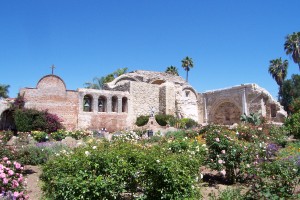
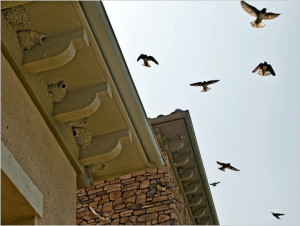
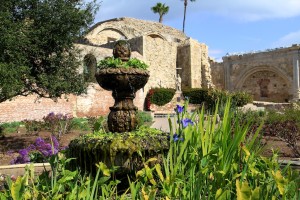
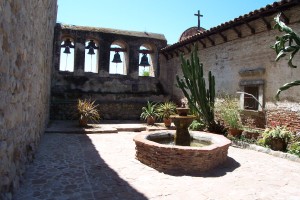
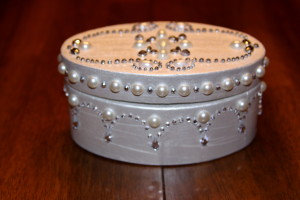
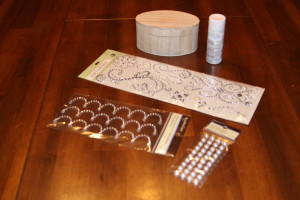
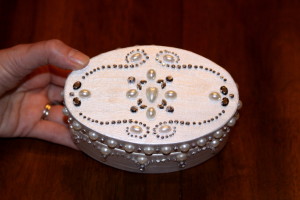
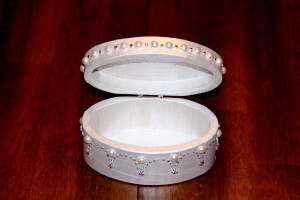
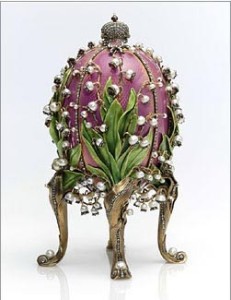
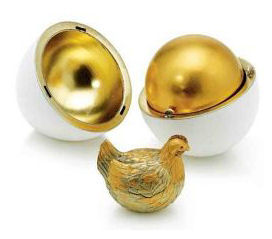 This first Faberge Egg created for the Russian Imperial family, known as the Hen Egg, was crafted in 1885 of gold with a white enameled shell which opened to reveal a series of delightful surprises. The first was a golden yolk which opened to reveal a golden hen which also opened to display a miniature replica of the Imperial Crown created in diamonds and rubies. (Currently, all that remains is the outer gold and enamel shell with the golden yolk and unfortunately the golden hen and miniature crown have been lost.)
This first Faberge Egg created for the Russian Imperial family, known as the Hen Egg, was crafted in 1885 of gold with a white enameled shell which opened to reveal a series of delightful surprises. The first was a golden yolk which opened to reveal a golden hen which also opened to display a miniature replica of the Imperial Crown created in diamonds and rubies. (Currently, all that remains is the outer gold and enamel shell with the golden yolk and unfortunately the golden hen and miniature crown have been lost.)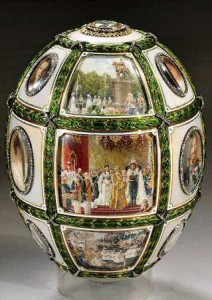
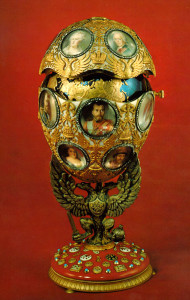
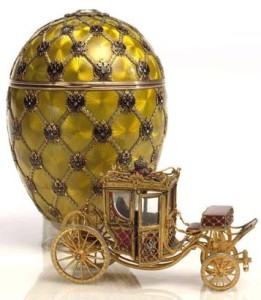
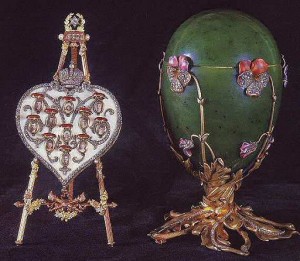
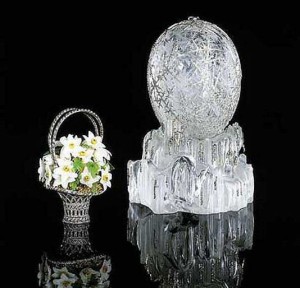
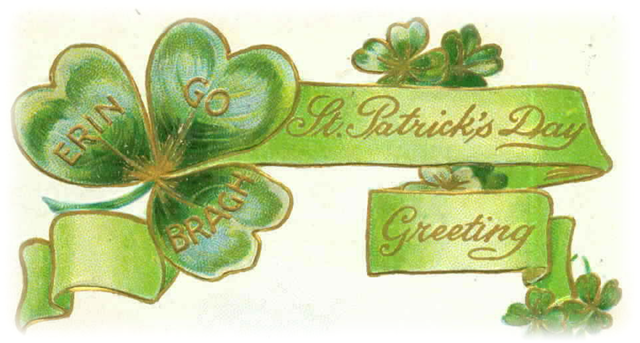
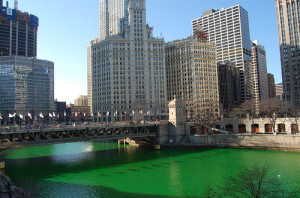 The first St. Patrick’s Day parade took place not in Ireland but in Boston in 1737. Later in 1762, to celebrate and observe St. Patrick’s Day, a group of Irish soldiers serving in the British military marched through the streets of New York City and expressed their Irish pride through their music with bagpipes and drums. Since that time, the Irish immigrates in America have held annual parades not only in New York City but also Boston, Chicago and Philadelphia. On very unique tradition developed in Chicago when in 1962 city workers, in an attempt to control pollution and trace illegal sewage leaks, released green dye into the Chicago River. This idea of dyeing the river has now become an annual event in celebration of St. Patrick’s Day.
The first St. Patrick’s Day parade took place not in Ireland but in Boston in 1737. Later in 1762, to celebrate and observe St. Patrick’s Day, a group of Irish soldiers serving in the British military marched through the streets of New York City and expressed their Irish pride through their music with bagpipes and drums. Since that time, the Irish immigrates in America have held annual parades not only in New York City but also Boston, Chicago and Philadelphia. On very unique tradition developed in Chicago when in 1962 city workers, in an attempt to control pollution and trace illegal sewage leaks, released green dye into the Chicago River. This idea of dyeing the river has now become an annual event in celebration of St. Patrick’s Day.